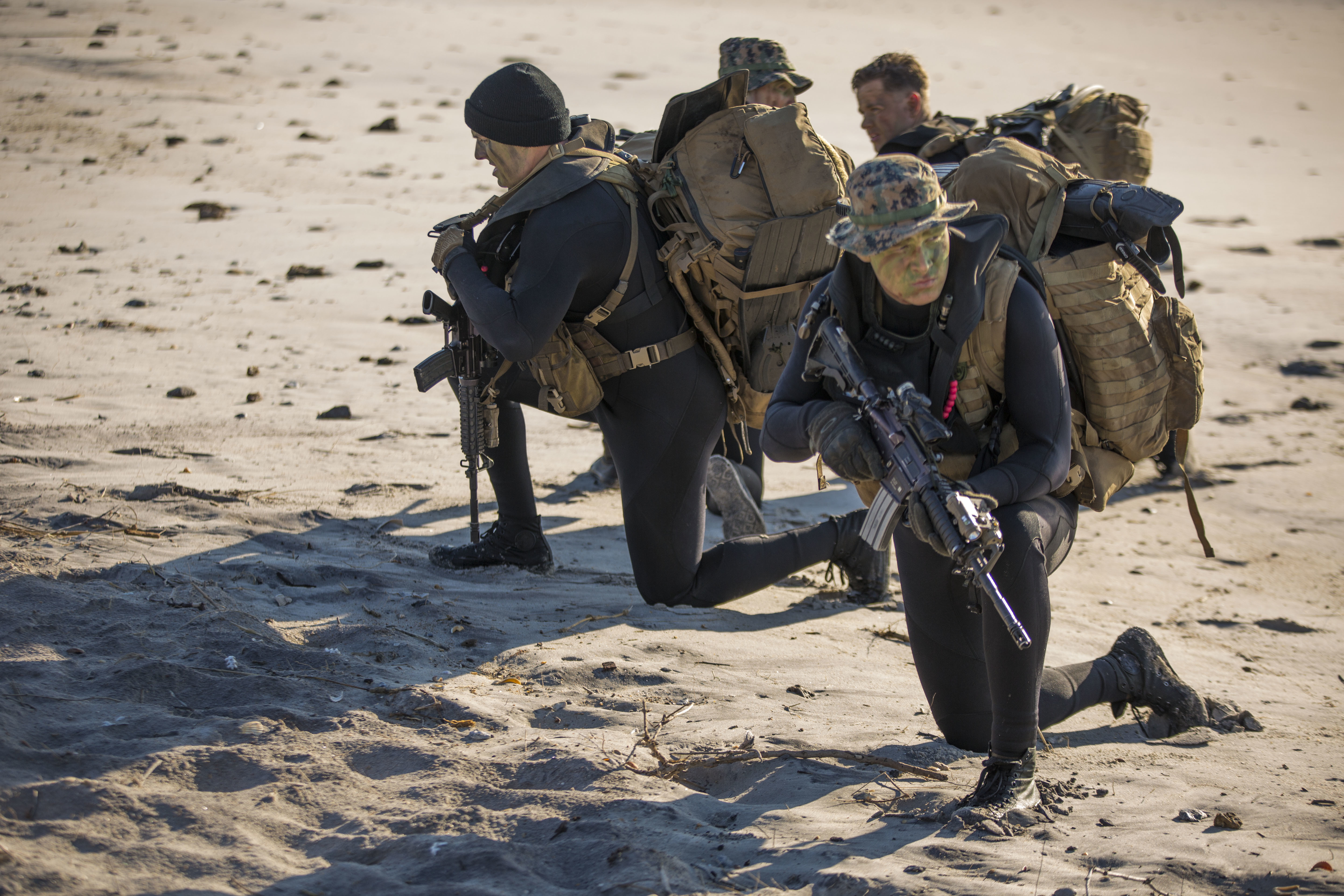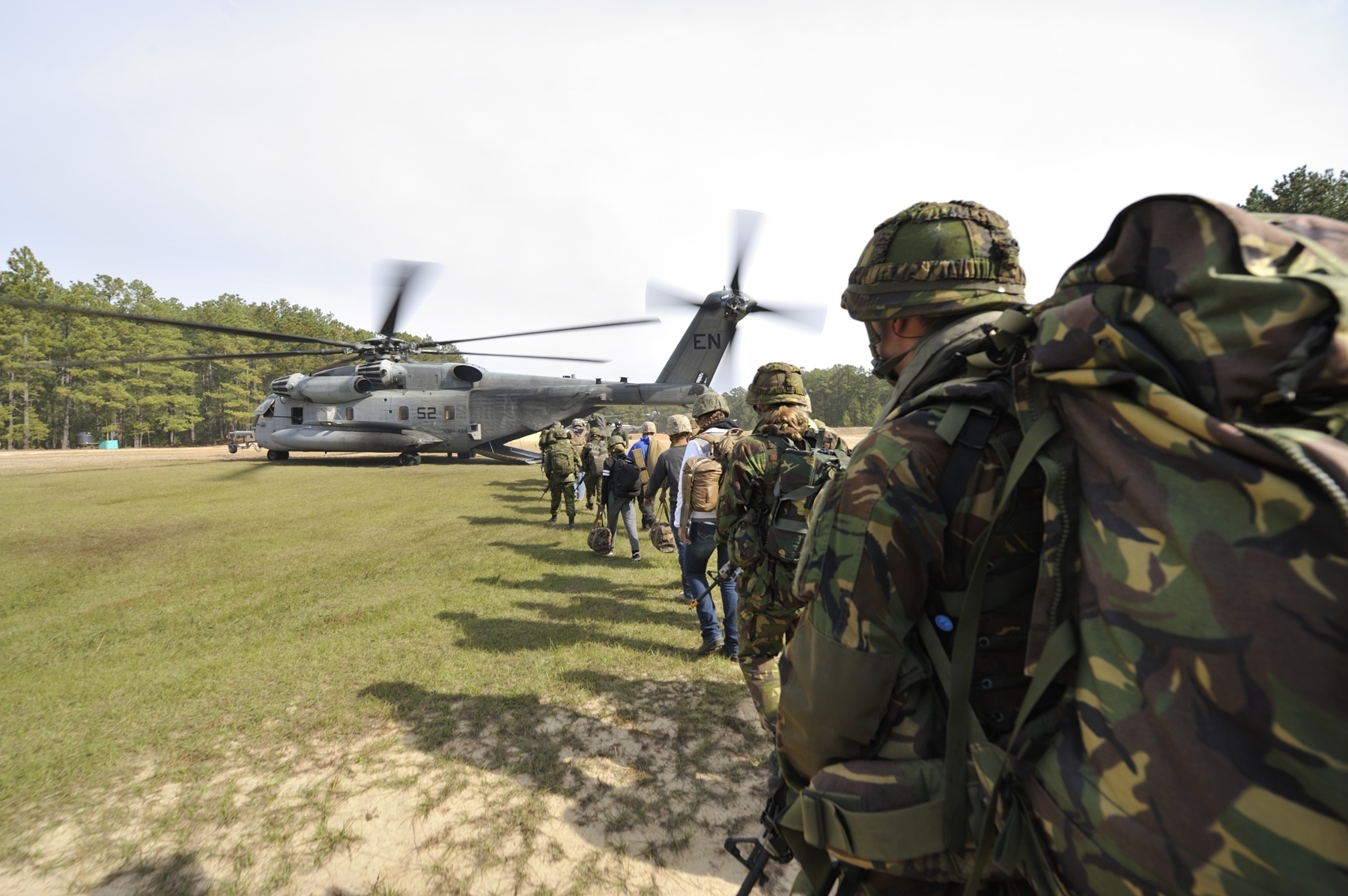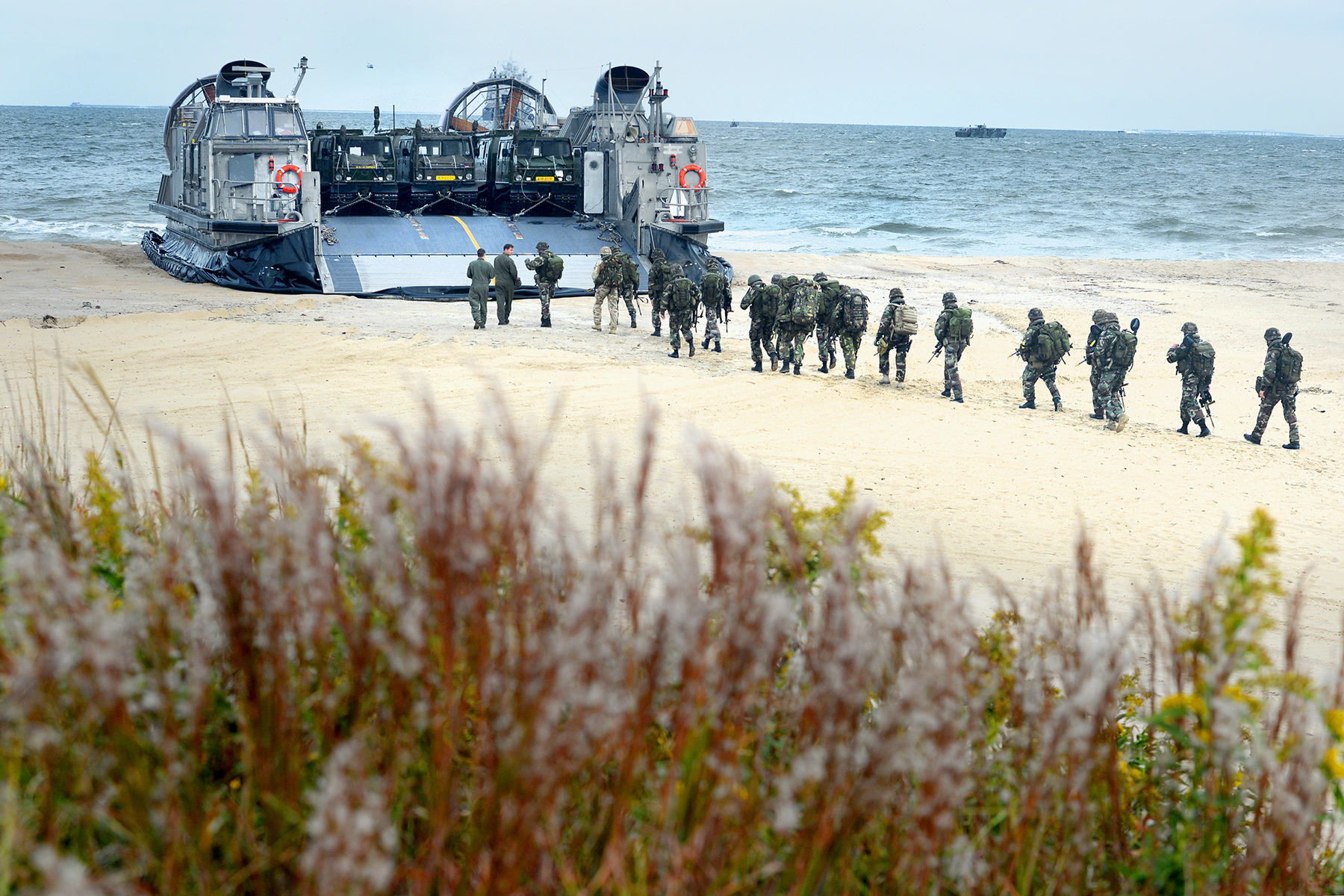
The Navy and Marine Corps’ Bold Alligator 17 international amphibious exercise will still take place this month but will be scaled down due to ongoing humanitarian assistance and disaster relief missions after Hurricanes Harvey, Irma and Maria.
Bold Alligator began with a simulated exercise in 2010 and a live exercise in 2012, and is now the East Coast’s premiere amphibious force training exercise. It is comparable to Dawn Blitz on the West Coast, Rim of the Pacific in Hawaii and Ssang Yong in South Korea for forces forward-deployed in Japan. While the exercise offers an opportunity to experiment with new gear, command and control structures and operational concepts, Marine Corps leadership has long spoken of its set of biennial exercises as a key opportunity to get Marines aboard amphibious ships outside of Marine Expeditionary Unit deployments, and increase the service’s familiarity with and ability to operate from Navy warships.
Bold Alligator was last conducted as a live exercise in 2014, with the 2015 installment meant to be a simulated event. Last year’s live exercise was postponed a year, with the services opting instead to conduct a pierside live, virtual and constructive event to prepare for this year’s highly integrated exercise between traditional amphibious forces and the carrier strike group needed to help set the conditions for amphibious operations. Commandant of the Marine Corps Gen. Robert Neller has on several occasions told USNI News that this year’s BA 17 event would look to further integrate the carrier and the surface combatant side of the fleet with the amphibious forces – an integral part of the new Marine Corps Operating Concept and its Littoral Operations in a Contested Environment offshoot.
However, due to ongoing HA/DR missions in Puerto Rico, many of the forces set to participate in the major live exercise will not be available anymore.
Expeditionary Strike Group 2 leadership was sett to serve as the Commander of the Amphibious Task Force aboard amphibious assault ship USS Kearsarge (LHD-3). Now, ESG-2 and Kearsarge are no longer available for BA 17, along with 26th Marine Expeditionary Unit, amphibious assault ship USS Iwo Jima (LHD-7), amphibious transport dock USS New York (LPD-21), dock landing ship USS Oak Hill (LSD-50), hospital ship USNS Comfort (T-AH-20), aviation logistics support container ship SS Wright (T-AVB 3), and elements of Naval Expeditionary Combat Command and 2nd Marine Aircraft Wing – all of which are tied up with the ongoing HA/DR response, according to a U.S. Fleet Forces Command statement.

As a result, the very nature of the exercise had to change. Whereas previously BA 17 would have been conducted as a scenario-based training event – operational commanders would have fictitious locations, political environments, adversaries, civilian populations and more written into their scenario, and they would generate operational plans and conduct amphibious landings, air raids and more as the scenario played out – BA 17 will now consist of a string of standalone scheduled events. Fleet Forces noted that by moving from the scenario-driven exercise to a schedule of events-driven exercise, “we are able to maximize the training value for remaining U.S. and partner nation forces,” spokesman Lt. Cmdr. Brian Wierzbicki told USNI News on Friday.
“While the scope of the exercise has been modified because of U.S. and partner nation efforts in the wake of hurricanes Harvey, Irma and Maria, BA 17 will incorporate amphibious, carrier strike group, air wing, and expeditionary mine countermeasures operations to provide a rigorous training environment for the combined forces,” he added.
On the Marine Corps side, without Kearsarge and other amphibious ships, many planned amphibious landing events have been canceled and ship-based experiments and events moved ashore, II Marine Expeditionary Force (MEF) spokesman Lt. Col. Mike Armistead told USNI News.
“A fair amount of the Navy will not be participating, so it has become more of a tactical level amphibious exercise with 2d MEB as a response cell and a regimental landing team conducting training with allied partners,” he said.
The exercise, planned to take place in Camp Lejeune, N.C., and in the Atlantic Ocean from Oct. 18 through Oct. 30, will still include forces from aircraft carrier USS George H.W. Bush (CVN-77); guided-missile cruisers USS Philippine Sea (CG-58), USS Hue City (CG-66); guided-missile destroyers USS Laboon (DDG-58) and USS Jason Dunham (DDG-109); dock landing ships USS Fort McHenry (LSD-43) and USS Gunston Hall (LSD-44); amphibious transport dock USS Arlington (LPD-24); mine countermeasures ships USS Champion (MCM-4) and USS Ardent (MCM-12); Explosive Ordnance Disposal Group 2; Naval Surface and Mine Warfare Development Center; 2d Marine Expeditionary Brigade (MEB); II MEF Information Group; 2d Marine Aircraft Wing (MAW); 2nd Marine Logistics Group (Forward) and more.

International forces participating in the exercise include Mexican ship ARM Papaloapan (A 411); French ship FS Forbin (D 620); Canadian ships HMCS Summerside (M 711) and HMCS Glace Bay (M 701); and other forces from Brazil, Canada, France, Germany, Mexico, Netherlands, Norway, Spain and the United Kingdom.
Though the traditional Bold Alligator scenario would work its way up to higher-end warfare events like a tactical recovery of aircraft and personnel (TRAP), a raid, a beach assault and more, the scenarios tend to start with lower-threat events like a humanitarian assistance/disaster relief event — which is precisely what the Navy and Marine Corps are busy with today in the Caribbean, in a real-world application of what they train for.
“Bold Alligator allows the Navy and Marine Corps team to prepare for naval expeditionary amphibious combat operations to enhance current naval readiness and inform sea control and power projection force development capabilities,” Lt. Gen. Mark Brilakis, Commander of U.S. Marine Corps Forces Command, said in a Friday news release.
“Although Bold Alligator 17 has been modified due to real world events, it still allows the Navy/Marine Corps team to gain capabilities and to work with our partner nations to set the stage for future exercises in the amphibious training continuum such as Exercise Trident Juncture 18, BA19 and LSE (Large Scale Exercise) 2020.”





